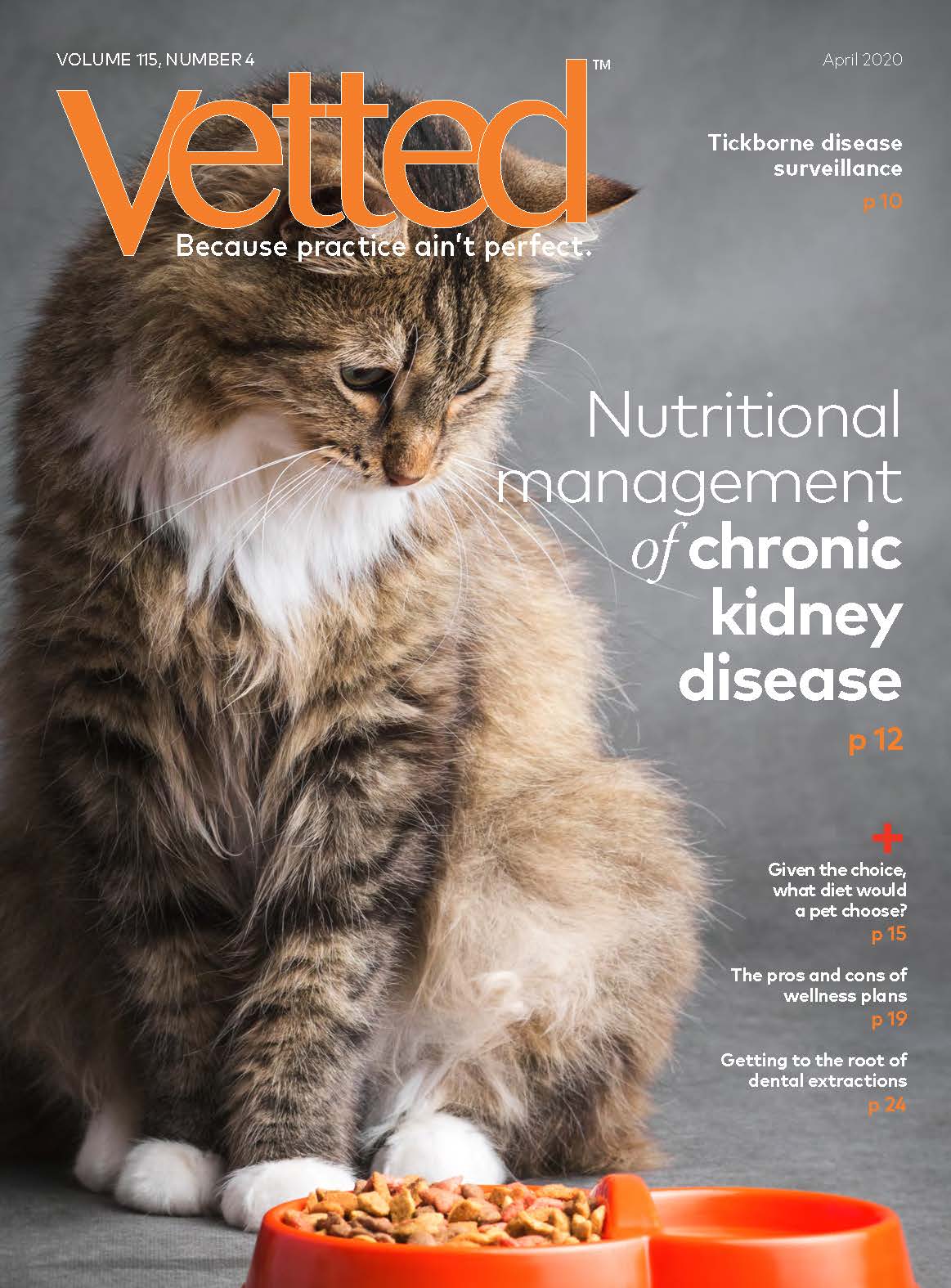What to know before you buy a veterinary clinic
Before you buy a veterinary hospital, young doctor, make sure you understand the basic financials of the practice and get some expert advice on the details to make sure you know what youre paying for.
tecnofotocr/stock.adobe.com

Years ago, in college, I wanted to buy a horse, so I made the long drive from Kentucky to Wyoming to spend several days riding and roping a wide assortment. A roan quarter horse, Remington, eventually worked himself to the top of the list. As “right” as he felt, though, I remember my mentor at the time stressing the importance of having the local veterinarian do a prepurchase exam. He emphasized that I was looking not just for a horse, but the horse I'd be investing my time, money and energy into for the next 20 years. I owed it to myself and Remington to know exactly what I was getting.
My mentor's message has stuck with me through the years, especially into my professional career. As a multihospital practice owner, I've explored many potential practice purchases, and just as I did with Remington, I am always looking for just the right one to add.
Most other private practice owners I know are in similar shoes. So, if you've decided that an existing practice is right for you-regardless of whether it's your first, your 10th or the last hospital you'll own-you need the business version of a prepurchase exam.
Don't do it alone
When it comes to a prepurchase exam for a veterinary-clinic-sized investment, don't use your general accountant or that brother-in-law who dabbles in valuations. Find a veterinary valuation analyst. If you're not sure how, check out vetpartners.org for a directory of experts.
Your starting point is ensuring you have a basic understanding of several key financial documents and how to use them in the prepurchase exam.
What's on the balance sheet-and why you should care
We hear a lot about profit-and-loss statements (P&Ls) in veterinary medicine, but balance sheets don't get enough attention. Here's the Cliffs Notes version of what shows up on this:
Assets, the things a veterinary hospital owns with monetary value, are listed in categories based on how quickly they can be turned into cash, sold or consumed. Current assets include cash, accounts receivable and short-term investments. Fixed assets include the building and equipment.
Accumulated depreciation may be subtracted from assets to show the actual value of physical resources.
Liabilities reflect all the money a practice owes to others: loans, accounts payable, wages, taxes and other debts. Current liabilities are typically due within one year, while long-term liabilities are usually due over a longer period of time.
Owner's equity-net assets or net worth-represents the assets that remain after deducting what a practice owes. This is not the same thing as practice value.
Balance sheets are used to calculate basic ratios, including the hospital's ability to meet financial obligations and to make payments when they're due (“days' cash on hand”). As a potential buyer, you're looking for a clinic that has struck a balance between having enough cash to pay bills each month and meet any unexpected expenses, but not so much cash that assets are being used inefficiently. For example, you may want to invest extra cash in hiring a new veterinary technician who can generate additional income rather than just letting the cash sit in your checking account.
Other ratios include debt ratio and debt-to-equity ratio to evaluate how effectively a practice uses credit to finance operations. You want to compare the current reporting period to previous periods using a percentage-change analysis to answer important questions:
- Has the practice added assets?
- Has it accrued more debt?
- Are liabilities under control?
- Are accounts receivable growing or shrinking?
If there are inconsistencies in these trends, you need to further clarify with the seller or broker.
Until recently, we didn't hear much about the value of balance sheets in our profession, which means key performance indicators are difficult to find. As an aspiring practice owner, even understanding their value gives you a great place to start.
P&Ls: The other half of the financial picture
A P&L complements the balance sheet. Looking at one without the other is liking running bloodwork without also running a urinalysis. For those unfamiliar with P&Ls-that was me early in my career-they're income statements categorizing a veterinary hospital's revenue and expenses for a given time period. Practice owners must be able to use P&Ls to:
- Identify opportunities to generate profit by ethically increasing revenue and decreasing costs
- Highlight areas where expenses need to be tightened or where additional spending might benefit the hospital
- Plan for profits, including managing supplies, capital investments and the practice owner's return on investment.
I tend to focus on five primary P&L numbers when I'm considering a hospital to buy. They offer insight into the current level of management, and they represent an opportunity post-acquisition:
- Gross revenue, the money brought in during a given time period before expenses are subtracted
- Net income, the hospital's revenue minus all “ordinary” expenses
- Payroll, which includes wages, taxes, worker's compensation, benefits, uniforms, CE and contracted veterinary specialists
- Cost of professional services (also referred to as cost of goods sold, or COGS), which combines expenses associated with providing the services the practice offers-cost of professional services, pharmacy, laboratory, imaging and radiology, dentistry, and grooming and boarding
- Rent or real estate mortgage; this does not include facility costs, utilities or repair; it's just the cost to lease the facility or pay the mortgage or rent to the seller if the building is owned outright.
Pulling reports from your practice software
There are a wide variety of reports you can pull from your practice software or PIMS (practice information management system). When I'm analyzing a practice, I tend to focus on period totals, production by provider and inventory.
Remember that business models and philosophies affect these. For example, a high-volume practice may have a much lower average daily transaction (ADT) than a low-volume, high-touch hospital but still have a similar profit margin as long as patient volume makes up for lower transactions. Similarly, even though one benchmark finds that the average practice nationwide brings in 24 new clients per month per full-time-equivalent veterinarian, a practice with high client turnover or a low client bonding rate might need many more than that. Someday a seller might tell you their ADT is low because of their clientele, compliance rate, etc., and while I recognize a hospital in a ritzy part of Seattle better have a higher ADT than a hospital in Plainville, Kansas, it doesn't mean the numbers don't offer insight into how the practice is being run and opportunities that may exist for a buyer.
The first practice I owned was in a small town in rural Nebraska. When my partner and I purchased the clinic, the former veterinarian's ADT was $93. The hospital was located in a county with one of the highest percentage of citizens on welfare in the entire state, and our staff were convinced that clients would never want, or be able to afford, better care. My partner and I didn't walk into the hospital with the goal of raising the ADT to the national average or any other arbitrary number, but we did diagnose why our average was $93 and what that told us about the medicine and client compliance. Then we set forth to improve those two things. Five years later, my partner had elevated the quality of care and compliance with an ADT running just over $200 … in that small, one-doctor, mixed-animal rural practice.
Check the checklists for staff, equipment and inventory
A staff list-complete with tenure, position, wages and benefits-will help you plan how to leverage the team you may inherit as well as determine whether your staffing ratios are where you want them. Verified lists of equipment and inventory are two of the few tangible assets you're buying in a hospital acquisition, and they'll help you evaluate the level of in-house diagnostics your hospital can support as well as any capital purchases you may need to make.
A final word
We've just scratched the surface of important tools in your toolbox as an aspiring owner. Sure, every hospital will have strong months and weak months for revenue, but dishonest sellers can manipulate net income over a short period of time to inflate it. When conducting your prepurchase exam, look for trends over time. Conducting a thorough exam isn't necessarily quick and easy, but just as with that quarter horse I had my eye on, if you're looking for a career-long investment, due diligence on the front end is well worth it.
Stith Keiser is CEO of veterinary consulting firm Blue Heron Consulting.
